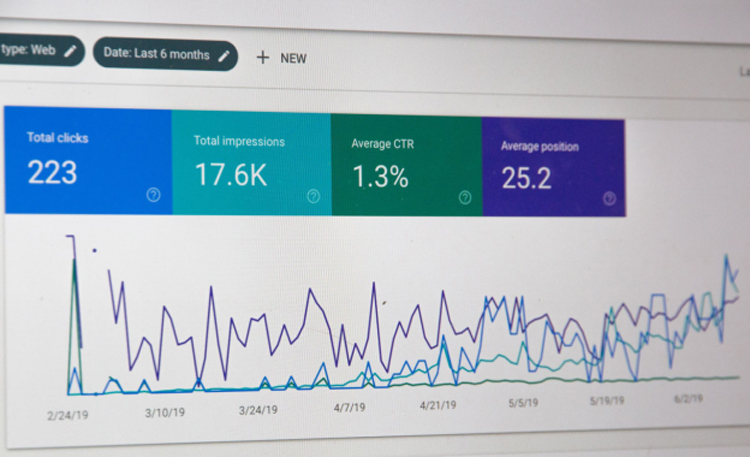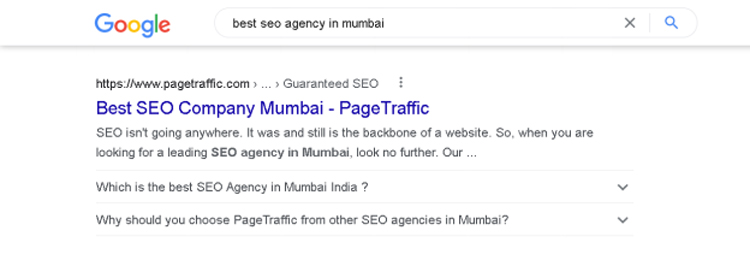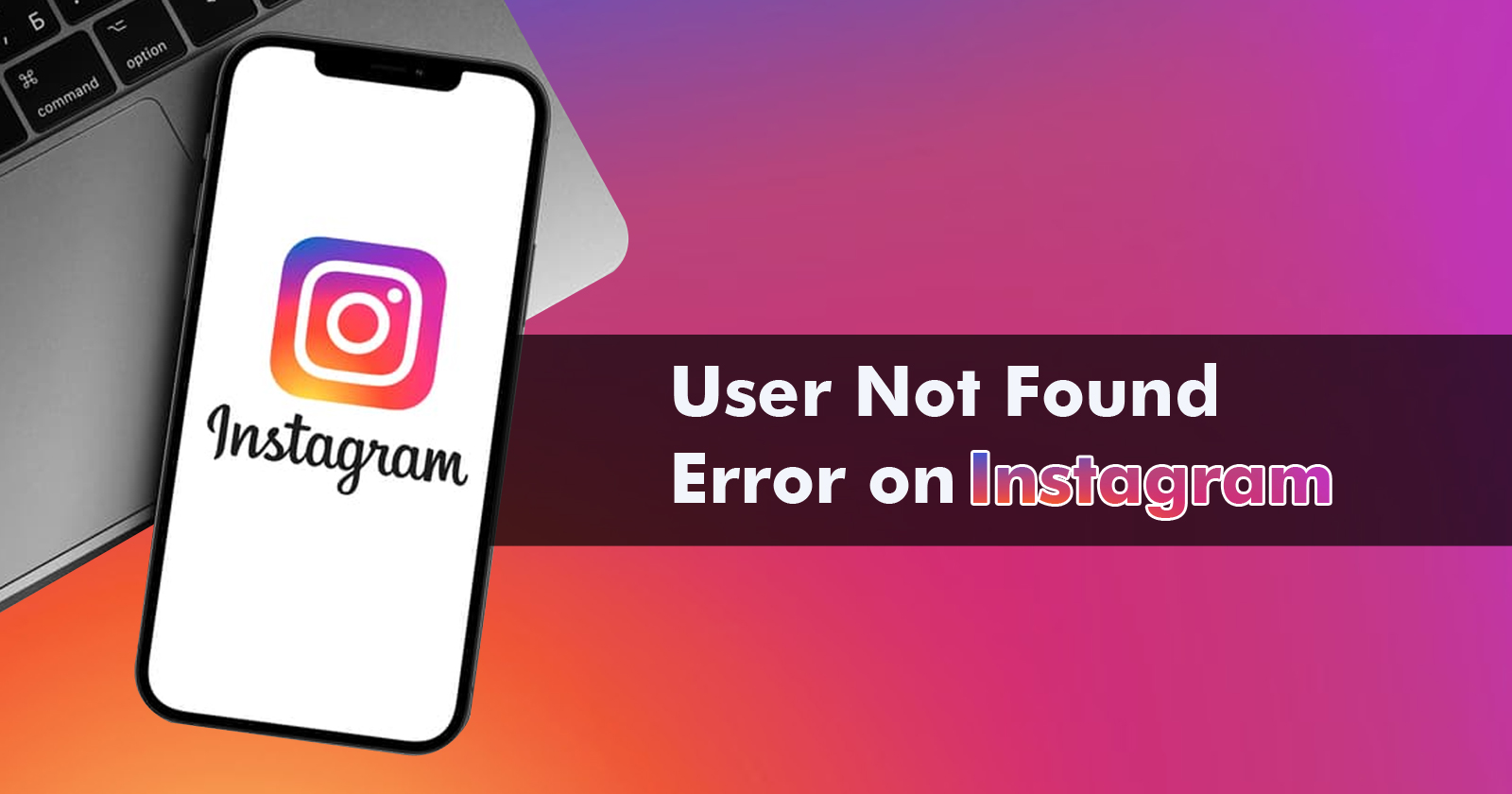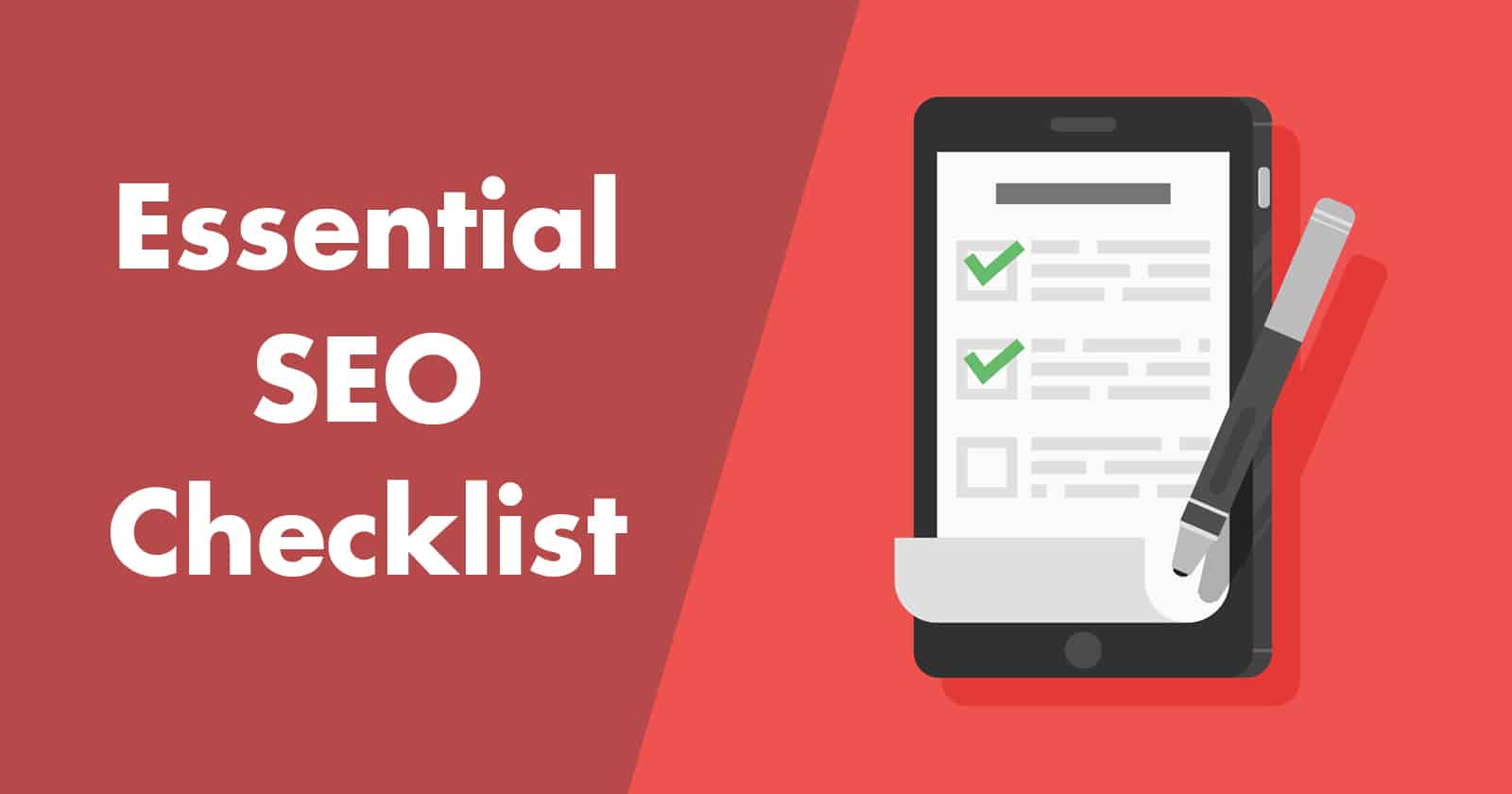How to Perform an Effective SEO Audit in 2024: A Checklist
Not happy with your website performance? Learn how to perform an SEO audit with this checklist to improve your website performance using these steps.

Most SEO specialists start their work with an in-depth SEO audit after signing a new client or joining in-house at a new company. To achieve your goals, you must first understand where you are. This is when an SEO audit comes in handy. Wherever people are looking for you — your products, your services, or the topics you know a lot about – that’s where you want to be. That means improving your visibility in Google, and other search engines’ rankings is critical.
Another use case for an SEO audit could be a situation where you have done all you can think of to make your website a search engine success, but the needed traffic is still not coming to your site. This should be a major concern and a possible explanation for many restless nights. The first and most important step in such a situation is to get a thorough SEO audit.
What is an SEO Audit?
An SEO audit is a thorough examination of your SEO campaign and tactics. With an assessment, you can see what you are doing well and where you can improve. The purpose of an SEO audit is to find flaws in your campaign. An audit can assist you in uncovering where your campaign has flaws and how those flaws affect your site’s performance. When you run an SEO audit, you will get a list of things you can do to improve your website performance. It is a fantastic approach to boost your website’s performance and your campaign’s effectiveness.
When is it Right to Perform an SEO Audit?
It is a good idea to audit your campaigns before they go live to ensure they are ready to succeed. You should also think about auditing your SEO strategy every quarter. Your SEO plan will also include monthly reporting and optimisation if you work with an experienced digital marketing agency. Opt for SEO Audit Services and get the work done without any hassle.
It is crucial to keep in mind that SEO takes time to produce results. You can monitor difficulties or changes in your campaign and make necessary modifications if you audit it every quarter.
How to Conduct an SEO Audit?
The SEO audit checklist covers several phases, but we will share only a few crucial tests to run on your website.
Perform A Crawl Test
Screaming Frog or Beam Us Up are two tools that can be used to run a crawl test. These tools explore your website in the same way that a search engine crawler does. They can help you find issues with your website’s structure and SEO setup. Alternatively, you can create your own website crawler to focus on the areas that are most relevant to you.
In any event, a crawl report will detail any faults with your website that make it crawler-unfriendly. The crawl test will reveal all broken URLs. When dealing with broken URLs, if you discover that one of the pages matching the broken URL is no longer available on your website, redirect it to a relevant substitute.
If you use a redirect, make sure it is a 301 permanent redirect. In this manner, any drop in search traffic will be avoided because all links to the same page will be ranked according to the domain authority of your page, which is based on inbound links. Furthermore, the traffic is sent to a URL with the same search engine authority as either.

Moreover, it is a good idea to register your website with both Bing and Google’s webmaster tools to ensure a full evaluation. You can also look at traffic patterns to see if there are any broken links or duplicate material. For example, if a large portion of your audience leaves your website after hitting a particular link, it may be broken.
The actual audit will commence after the crawl test is completed. You will be evaluating your website based on several factors. These can be classified into four groups:
- Visibility and Accessibility of The Website
- Index Ability
- On-Page Ranking Factors
- Off-Page Ranking Factors
Let’s discuss each of these in brief-
Visibility and Accessibility of the Website
Your website can only be put to use after it is made visible to the target audience. You perform some essential technical SEO checks to accomplish this.
Below are a few technical SEO tasks that you can perform to enhance the visibility and accessibility of your website.
- Robots.txt Analysis
- XML Sitemap/Analysis
- Canonicalisation
- Website Architecture and Performance

- Robots.Txt Analysis
A Robots.Txt file or protocol tells a search engine or a web robot which pages on your site it can crawl and index and which it cannot. The Robots.Txt file will always be present at the domain’s root. This text file can be used to prevent the search engine from crawling low-quality areas of the site. As a result, Google recommends only using this file when there are server- or crawl-related performance difficulties.
- XML Sitemap/Analysis
The purpose of XML sitemaps is to allow search engine crawlers to index the links on your site. The XML sitemap, or Extensible Markup Language sitemap, informs the search engine about the various URLs on the site. The availability of an XML sitemap encourages a search engine to crawl and index the given URLs. Various online tools can be used to create an XML sitemap for your website.
- Canonicalisation
Another crucial part of SEO is link building. A canonical tag tells the search engine to reject duplicate or similar material on other pages and treat a specific page or URL as the master page.
- Website Architecture And Performance
The architecture of your website has a direct impact on its performance. Users and search engines have limited time to spend on your website. That is to say, if your website takes too long to load, it will not be crawled entirely by search engines or users. You can test the performance using tools like Google Page Speed or Pingdom for more detailed findings. These tools will show you which pages, as well as individual things on those pages, are influencing your website’s performance. Once you have discovered them, you may start implementing appropriate solutions. You can use compression tools or utilize a Content Delivery Network site to support heavy website elements.
Index Ability
Google ‘reads’ your content and indexes your pages when crawling your site. Indexing is necessary for your page to appear in search results. Your pages will not appear in search results if they are not indexed, which will affect your SEO. Make sure your pages are not getting mistakenly blacklisted by Google during your SEO audit.
You should look at your index status report in Google Search Console. Using this function, you may view how many pages Google has crawled on your domain. There is a significant likelihood that some of your pages are not indexed if the number of pages does not seem to increase.

You can search your site to get a list of indexed pages when you check your pages. You may also see which URLs are prohibited or not indexed by adding ‘robots.txt’ to the end of your URL. This method will allow you to see which pages are indexed and which are not. It is a quick and easy technique to aid in indexing your pages, which can increase your SEO.
On-Page Ranking Factors
On-page SEO is a type of search engine optimization that improves a page’s rankings in relevant search results by using on-site adjustments. On-site optimisations aim to improve the content and source code of a page and might involve things like adding new material, inserting keywords, increasing page performance, and more.
- URL
Brief descriptions of the page’s topic should be included in the URLs for your website’s pages.
For example, www.pagetraffic.in/seo-packages-india/ would be a decent URL for a page on SEO Service Packages in India. You can also use the mentioned structure if you have multiple locations: www.yoursite.com/locations/seo-packages. In addition to making your site easier to navigate, including your keyword in your URL rather than a big string of jumbled numbers provides users a better notion of your page subjects.
- Title Tag
Google needs to know what your page is about in order to show it in search engine results pages (SERPs). It is easier for search engine crawlers to understand your website if you use certain keywords in the title tag of each page (<title>, /title>).
If you want to target the keyword “SEO services in India,” for example, you could use the title tag “Top SEO Service Providers | Company Name.” Limit your title tag to 70 characters to avoid Google cutting it off in search results, and utilize your chosen keyword at the start for the best results.

- META Description
A meta description has no direct impact on on-page optimization. It is, however, a tool that assists users in learning more about your page. Another incentive to enhance your meta description for on-page SEO is that Google will bold user search phrases in your meta description.
Your meta description should be no more than 160 characters long for the best results.
- Heading Tags
You should employ heading tags for both search engines and users. Throughout your text, use header tags to divide it up and make it more legible and skimmable for consumers. You can also include your core or related keywords to give search engines more information about your page.
A post regarding SEO services, for example, could include the following headings:
- What is included in SEO services?
- What is the cost of SEO services?
- What is the greatest way to find the best SEO agency?
Remember to use your H1 tag to target your primary term when crafting your heading tags.
- Alt Tags
Because search engines cannot see multimedia, they rely on alt attributes to explain what it is. For example, if you have a snapshot of a computer, your alt tag may be “best computer for work.” You can also give the image files descriptive titles so Google can better understand what you are working with.
Make sure your multimedia content has an alt tag. Apart from Google, alt tags assist people who are unable to see, engage with your content. Everyone who visits your site will be able to engage with your content if you use alt tags.
- Keywords
Text content should be included on each page of your website that explains the page’s topic. Even pages that are not usually optimized, like the “Contact Us” page, can help your company establish online visibility. Including keywords in your page’s body text helps Google read and rank it appropriately.
You should conduct keyword research for each page on your site and build a list of keywords. Keyword research tools such as KeywordsFX and Keywordtool.io can help you figure out what consumers are looking for when they search for your products and services.
To determine which keywords are the most valuable, look at monthly search volume and competitiveness indicators.

Smaller businesses will usually concentrate on long-tail keywords, which are three to four words long. Long-tail keywords have lower monthly search counts than broad keywords, but they also have less competition. Because long-tail keywords are more detailed, it is usually easier to figure out what people are looking for.
When someone searches for “SEO services,” for example, it is difficult to know exactly what they are looking for. Perhaps they are looking for the greatest marketing tactics for their company, or they would like to try their hands-on digital marketing.
If someone searches the long-tail phrase “Hire SEO agency in India,” on the other hand, you know exactly what they’re looking for — and that they’re ready to buy.
Short and long-tail keywords are used in high-performing SEO efforts, and the terms you pick to target will depend on your business and goals.
- Content
On-page optimization relies heavily on content. You can give your users a cause to visit your site by providing the best content. People look at your material, whether it is to read a blog post or to look at a product page. Search engines can better comprehend and rank your content if you optimize it, leading to more people finding your website.
Following practices make up on-page SEO for content:
- Place keywords in headings and paragraphs
- Organize your material into easily digestible headers
- Add relevant photos to your post to help it stand out
- Ensure that your information is written correctly in terms of spelling and punctuation
- Improving the trustworthiness and authority of your material
In addition, you should update your site with new content on a regular basis so that search engines can see that you are active online.
This can be accomplished through new blog articles, landing pages, and other techniques that demonstrate to Google that you are working hard for your consumers. You must also detect and remove duplicates to enhance your on-page SEO. Duplicate content refers to sections of your website’s content that are the same on many pages, and it is bad for two reasons.
Duplicate material confuses site visitors: When visitors come across duplicate content on your site, they may become confused and unsure of what to do next. Duplicate content messes up your content funnel and makes it impossible for your audience to take action. Duplicate content is terrible for on-page SEO, therefore, check your site for duplicate content on a regular basis and remove it.
Off-Page Ranking Factors
Off-page SEO refers to all activities that take place outside your website and influence your ranking in search engine results pages (SERPs). Increasing the relevance, trustworthiness, and authority of your website requires optimizing for off-site SEO ranking variables. This is reflected in Google’s algorithm, with off-page SEO accounting for more than half of the ranking variables. A solid off-page SEO strategy can make all the difference in where you and your competitors appear in the SERPs.
- Backlinks
Backlinking is at the heart of off-site SEO, and it is a practice that is essential for every site that wants to rank on page one. When it comes to determining where your site ranks in Google, backlinks are the most important criteria. If one domain has more backlinks than another, Google is more likely to rank it higher. Furthermore, Google considers the link’s quality; a link from a site with a higher domain authority (DA) is far more effective than a link from a site with a low DA. Nonetheless, the relevance of the link to your domain is taken into account by Google’s algorithm.
The creation of authoritative and relevant backlinks in accordance with Google’s guidelines should be at the center of every digital strategy. Links will drive referral traffic to your site, and Google will regard it as a trustworthy, dependable data source. However, creating links is time-consuming and requires a long-term strategy, but if done effectively, your website’s average ranking position in search results is likely to improve dramatically.
- Social Media Marketing
Using social media is one of the most efficient off-page SEO tactics. Using social media channels to broaden the reach of your content is a terrific way to do it. Not only can social media increase the number of people who click on your most recent piece of content, but it may also be a vital source of backlinks from a site with a high DA:

Google has not stated explicitly that a link from a social networking platform can help your SEO. However, they have acknowledged that social media networks are crawled for data like any other website on the internet.
While the SEO value of a backlink from a social platform is unknown, your social profile’s ranking in the SERPs is certain. Your social profiles will not only rank but will likely rank at the top for any brand-related search phrase. With this in mind, making sure your social profiles accurately reflect your organization and its values can impact a user’s first impressions, especially if they are new to it.
Furthermore, sharing informative content on social media increases your content’s visibility and the likelihood of it being linked.
- Posting Guest Content
Another successful online marketing strategy that can result in off-site SEO benefits is to provide guest content to third-party websites. This might be anything from a thought-leadership post to informative content, as long as it catches their readers’ interest. You should contact third-party websites, such as specialist online trade periodicals, whose target demographic is comparable to yours. This will increase brand visibility and exposure among potential customers, as well as the likelihood of driving referral traffic from that website. You will, of course, gain from a valuable backlink. Nurturing online relationships by offering useful content can be a great way to get more qualified traffic and leads.
Remember that posting material on a website with a high DA necessitates providing them with completely unique information or data that is likely to be in high demand by their audience. Always remember to be smart when approaching sites for guest post placement, and make sure you are reaching out to sites that are both trustworthy and relevant to your own target audience.
- Forum Posting
A forum posting site is an online discussion board that allows users to have meaningful dialogues in the form of messages that are placed on the site. When done effectively, forum posting can provide a number of advantages for your company:
- Obtaining new consumers
- A deeper understanding of your clients
- Chances to respond to any questions that consumers or potential clients may have
To establish a trustworthy reputation among other forum users, forum posting necessitates a long-term strategy. Find forums that already have a community and discuss a service similar to yours. This is a fantastic approach to interacting with current or potential clients on the internet.
Identify relevant forum discussions on which you may provide value, such as specialist knowledge on a specific issue to assist in answering a user’s inquiry. As part of a forum conversation, there may also be the possibility to include a link back to your website. However, use caution while engaging in this activity. Only provide a hyperlink to your website if it is very relevant to the topic and helps answer another user’s issue.
Conclusion
Planning your SEO audit is not easy and demands a certain level of ability and knowledge. It’s advised to get in touch with an experienced and reliable SEO company to get the best services.
Frequently Asked Questions
How do you do SEO audit?
We have put together a checklist for a very comprehensive SEO audit, which includes technical, off-page, and on-page SEO:
● Identify link development opportunities
● Look for ways to improve your website architecture
● Find and replace weak content
● Detect and replace duplicate material
● Perform a keyword optimization scan
● Metadata should be optimized
● Identify potential for page updates.
● Analyze the page speed
● Check for any errors on the site
● Switching from HTTP to HTTPS is a good idea
What is included in an SEO audit?
While SEO audits differ from expert to expert, they should all look at the same essential technical SEO ‘table stakes’, including sitemaps, server issues, and metadata. An audit should address accessibility, indexation, and optimization at a high level.
What is a SEO technical audit?
A technical SEO audit is a procedure that examines various technical aspects of a website to ensure that they are compliant with search engine optimization best practices. This refers to the technical aspects of your site that are directly related to search engine ranking elements.
Why do I need an SEO audit?
An SEO audit gives you insight into your website, indicating areas where you may improve your ranking in organic search results. Because search engines’ algorithms change on a regular basis, it is a good idea to check your website and see how those changes have affected you.
















